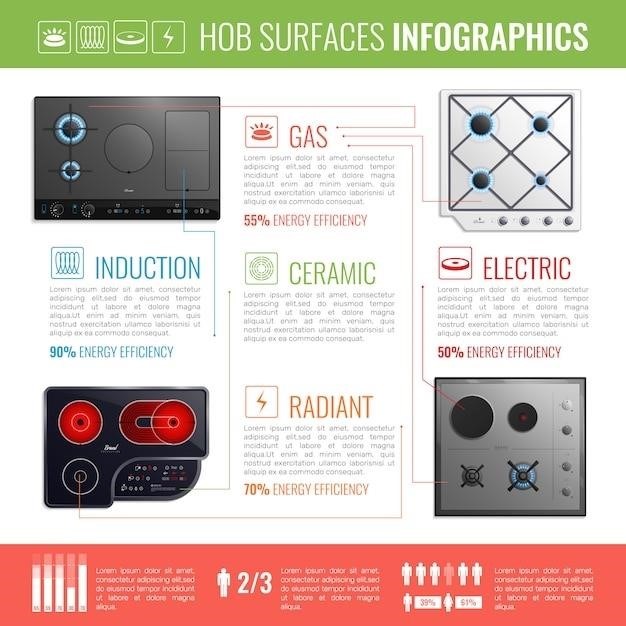CRSI Manual of Standard Practice⁚ A Comprehensive Overview
The CRSI Manual of Standard Practice, published since 1939, offers comprehensive guidance on reinforced concrete construction. It provides recommendations and best practices for design, estimating, detailing, fabrication, and placement of reinforcing steel. The manual is regularly updated to reflect current industry standards and innovations.
History and Evolution of the Manual
The Concrete Reinforcing Steel Institute (CRSI) Manual of Standard Practice boasts a rich history, first published in 1939. Initially, it served as a foundational guide for the then-emerging field of reinforced concrete construction, offering essential recommendations for the design and detailing of reinforcing steel. Over the decades, the manual has undergone significant evolution, adapting to advancements in materials science, construction techniques, and engineering practices. Each new edition reflects the collective knowledge and experience gained by professionals across the industry, incorporating updated codes, standards, and best practices. The evolution is marked by the incorporation of new technologies, such as computer-aided design (CAD), and the expansion of coverage to encompass various aspects of the construction process. Early editions focused primarily on fundamental principles and calculations, while later editions expanded to include detailed specifications, fabrication techniques, and quality control procedures. The continuous updates demonstrate CRSI’s commitment to providing a dynamic and relevant resource for the reinforced concrete industry.

Key Areas Covered in the Manual
The CRSI Manual of Standard Practice offers a comprehensive scope, addressing critical aspects of reinforced concrete construction. Material specifications and standards for reinforcing steel are meticulously detailed, ensuring quality and consistency in construction projects. Design considerations and recommendations provide engineers with practical guidance for optimizing structural performance and safety. Detailing and fabrication best practices are covered extensively, facilitating efficient and accurate representation of the reinforcement layout. Estimating and cost calculation methods aid in the accurate budgeting of projects. Procedures for the placement and installation of reinforcing steel are explained, emphasizing proper techniques to guarantee structural integrity. The manual also includes quality control and assurance measures, ensuring compliance with standards and reducing the risk of defects. Furthermore, it covers the handling, storage, and splicing of reinforcing bars, along with essential information on corrosion-resistant bars and bar identification. Finally, it provides a detailed library of typical bend shapes, both legacy and current. This broad coverage makes the manual indispensable for all those involved in the reinforced concrete construction process.
Design Considerations and Recommendations
The CRSI Manual delves into crucial design aspects, offering valuable recommendations for engineers. It emphasizes the proper selection of reinforcing bar sizes and configurations based on structural requirements and load calculations. Guidance on concrete cover and spacing of reinforcing bars is provided to ensure adequate protection against corrosion and to optimize structural behavior. The manual also includes detailed information on anchorage and splicing techniques for reinforcing bars, ensuring effective stress transfer and structural continuity. Furthermore, it addresses design considerations for specific structural elements, such as beams, columns, slabs, and foundations, providing tailored recommendations for each. The effects of various factors like concrete strength, environmental conditions, and loading types on the design are carefully examined. The manual promotes efficient designs that minimize material usage while maintaining structural integrity and safety. It also considers durability requirements and provides design recommendations to enhance the lifespan of reinforced concrete structures. Detailed examples and illustrations are incorporated to aid understanding and application of the design principles outlined. This section of the manual serves as a comprehensive resource for engineers, promoting safe and efficient reinforced concrete design practices.
Detailing and Fabrication Best Practices
The CRSI Manual provides detailed guidelines for the efficient and accurate detailing of reinforcing steel. It emphasizes the importance of clear and concise drawings that accurately represent the placement, size, and configuration of each bar. The manual covers various detailing methods, including manual drafting and Computer-Aided Design (CAD), providing recommendations for best practices in each. It outlines standards for bar marking, ensuring accurate identification and traceability throughout the fabrication and construction process. Fabrication best practices are also addressed, encompassing efficient bending techniques to minimize material waste and ensure dimensional accuracy. The manual details quality control measures to be implemented during fabrication, including inspections to verify bar dimensions and bend angles. It highlights the significance of adhering to industry standards and specifications to guarantee the structural integrity of the finished product. Furthermore, it discusses the handling and storage of reinforcing bars to prevent damage and maintain their quality. The section also covers various splicing methods, outlining best practices for ensuring proper stress transfer across the splice. The combination of detailed drawings and comprehensive guidelines ensures that fabricated reinforcing steel meets the required specifications and contributes to the overall structural safety.
Estimating and Cost Calculation Methods
The CRSI Manual delves into effective methods for estimating the quantity of reinforcing steel required for a project, crucial for accurate budgeting and cost control. It presents various techniques, from simplified approaches suitable for smaller projects to more sophisticated methods employing computer software for larger, complex structures. The manual emphasizes the importance of considering all factors influencing steel quantity, including bar size, spacing, and detailing specifics. It provides detailed information on calculating the weight of reinforcing steel based on bar size and length, facilitating accurate material ordering. Beyond material quantity, the manual guides users through cost estimation, encompassing labor costs for fabrication and placement. It offers insights into various pricing models, including unit pricing and lump-sum contracts. The importance of factoring in potential cost overruns due to unforeseen circumstances or design changes is stressed. The manual also provides guidance on evaluating different sourcing options for reinforcing steel, helping to optimize procurement costs. By following the manual’s recommendations, estimators can develop realistic and comprehensive cost estimates, crucial for successful project planning and execution. The goal is to empower users with the tools to accurately predict project costs and manage budgetary constraints effectively. This section promotes informed decision-making and cost-effective project management within the reinforced concrete construction industry.
Placement and Installation Procedures
The CRSI Manual provides comprehensive guidelines for the safe and efficient placement and installation of reinforcing steel in concrete structures. It details best practices for handling and placing rebar to ensure proper positioning and avoid damage. The importance of following approved shop drawings and adhering to specified dimensions is emphasized, as these directly impact the structural integrity of the final product. The manual outlines procedures for securely fastening rebar in place, preventing movement during concrete pouring. This includes using appropriate chairs, supports, and ties to maintain the designated spacing and alignment of reinforcement. Specific instructions are given for various structural elements, such as beams, columns, slabs, and foundations, recognizing that each element presents unique placement challenges. The manual emphasizes the importance of maintaining sufficient concrete cover around the rebar to protect it from corrosion and ensure adequate structural performance. Procedures for inspecting the placement of reinforcement before concrete pouring are outlined, ensuring that the work conforms to the design specifications. Correct placement is crucial for achieving the intended structural behavior and durability of the concrete structure. The manual’s detailed instructions and illustrations are designed to improve the quality of construction while promoting job site safety. It aims to minimize errors and ensure that the finished structure meets the required design standards and safety regulations.
Material Specifications and Standards
The CRSI Manual of Standard Practice dedicates significant attention to material specifications and standards for reinforcing steel. It meticulously outlines the acceptable grades and properties of reinforcing bars, ensuring compliance with relevant ASTM standards. Detailed information on the chemical composition, mechanical properties, and dimensional tolerances of the steel is provided. The manual clarifies the requirements for various bar sizes and shapes, including their nominal dimensions, areas, weights, and diameters. It addresses the importance of proper bar identification and marking to facilitate accurate placement and quality control. Furthermore, the manual includes stipulations for handling, storage, and protection of the reinforcing steel to prevent damage or corrosion before and during construction. Specific guidance is provided on splicing bars and the use of corrosion-resistant materials where needed. The manual also addresses the importance of mill test reports, which verify the steel’s conformity to the specified standards. This section aims to ensure that only high-quality materials are used, thus contributing to the overall structural integrity, durability, and longevity of the reinforced concrete structure. By adhering to the material specifications and standards outlined in the manual, engineers and contractors can minimize risks and enhance the performance of the concrete structures.

Quality Control and Assurance
The CRSI Manual of Standard Practice emphasizes robust quality control and assurance procedures throughout the reinforced concrete construction process. It details methods for verifying the quality of reinforcing steel from its initial production through its final placement within the concrete structure. This includes guidelines for inspecting incoming materials to ensure they meet the specified standards, checking bar dimensions and identifying marks, and verifying the integrity of splices and connections; The manual also outlines procedures for monitoring the concrete placement and consolidation process, ensuring proper embedment and spacing of the reinforcing bars. Regular inspections during construction are crucial to detect and correct any deviations from the design plans or material specifications. Documentation of these inspections and quality control checks is essential for maintaining a complete record of the project’s execution. Furthermore, the manual provides guidance on the use of non-destructive testing methods, where applicable, to assess the quality of the finished reinforced concrete elements without causing damage. Adherence to these quality control and assurance measures is vital in mitigating potential defects and ensuring the long-term performance and safety of the concrete structure. By implementing the recommendations in the manual, professionals can build confidence in the structural integrity and reliability of their projects.
Updates and Recent Editions
The CRSI Manual of Standard Practice undergoes continuous revision to incorporate advancements in materials, technology, and construction practices. New editions are released periodically to reflect evolving industry standards, research findings, and code changes. These updates often involve modifications to design recommendations, detailing procedures, fabrication techniques, and quality control protocols. Recent editions have focused on incorporating updated bend shape libraries, reflecting both legacy and current practices. Improvements in bar marking illustrations and expanded coverage of specific aspects of reinforced concrete construction are also notable additions. Access to the latest edition is crucial for professionals to ensure their designs and practices are aligned with the most current industry best practices. The availability of both print and digital formats enhances accessibility and ease of use. Staying current with these updates is vital for maintaining compliance with building codes and achieving optimal structural performance. Supplementing the manual with additional online resources provided by CRSI further facilitates access to the latest information, ensuring that professionals remain informed and equipped to execute high-quality reinforced concrete construction projects.
The Future of the CRSI Manual
The CRSI Manual of Standard Practice will continue to evolve, adapting to the dynamic landscape of the construction industry. Future editions will likely incorporate advancements in building information modeling (BIM), sustainable construction materials, and digital fabrication techniques. Integration of sophisticated analytical tools and data-driven design methodologies is anticipated, enhancing the precision and efficiency of reinforced concrete design. The manual’s role in promoting sustainability will likely expand, reflecting a growing emphasis on environmentally responsible construction practices. Furthermore, expect increased emphasis on innovative detailing solutions optimized for prefabrication and modular construction. Collaboration with other industry organizations and research institutions will play a pivotal role in shaping the future content and direction of the manual. Continuous feedback from industry professionals will be crucial in ensuring the manual’s continued relevance and value in guiding the design, construction, and maintenance of robust and sustainable reinforced concrete structures. The ongoing commitment to providing clear, concise, and up-to-date information will solidify its position as the leading resource in the field.


